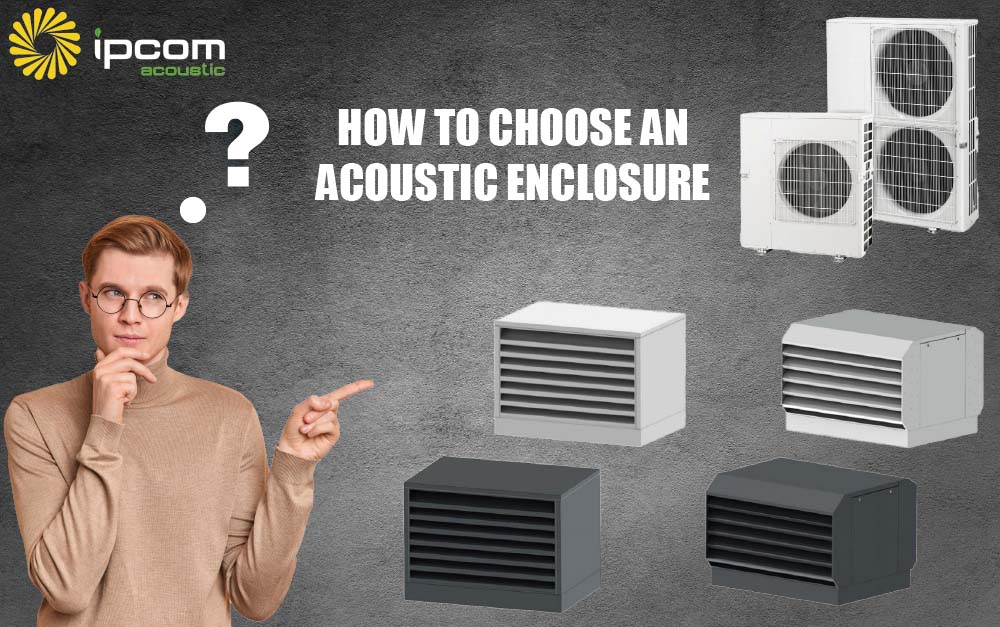Choosing noise control enclosures isn’t just about selecting boxes to hide your equipment. It’s about ensuring optimal performance of the system and compliance with regulations. It also provides long-term protection — whether it’s a heat pump, air conditioner, or generator.
Poorly selected noise enclosures can lead to two major problems: equipment malfunctions and insufficient noise reduction. As a result, there may be excessive noise disturbing others, as well as additional costs for repair or equipment replacement. That’s why it’s important to understand all the critical factors before making a decision. In this guide, we’ll help you navigate the key points.
Six Expert Guidelines for Selecting Noise Enclosures
As an acoustic solutions company, we’ve gathered the most important recommendations from our experts on how to choose the right acoustic housings.
1. Determine the Necessary Sound Suppression Level
When purchasing a generator, air conditioner, or heat pump, start by checking the product manual to see how much noise it generates. Next, find out what noise level is legally permitted at the intended installation site. Only by comparing these two values can you determine how many decibels of reduction are needed. This will help you choose a noise control enclosure that can effectively handle the task and ensure compliance with local acoustic standards.
2. Consider the Installation Environment
Environmental conditions play a major role in selecting the right acoustic housing. If your equipment is installed outdoors, the unit should be weather-resistant. For environments with high humidity, rain, snow, or extreme temperatures, the materials used must be corrosion-resistant and well-insulated. In areas with high pedestrian traffic, consider using a noise control enclosure with anti-vandal properties.
3. Select the Air Intake Option for Noise Enclosures
Rear and side air intake noise control enclosures are the most common types.The choice depends on installation conditions and ventilation needs.
If there’s free space behind the unit, a rear intake provides direct airflow and efficient cooling.
If the unit is near a wall or in a corner, a side intake allows proper ventilation from the open sides and prevents overheating.
4. Measure and Match the Correct Size
Always measure your equipment precisely and choose a model that allows extra space for ventilation and maintenance. Most manufacturers provide sizing charts. Some also offer bespoke acoustic enclosures.
5. Balanced choice: cost & acoustic
Many sound proof enclosures manufacturers offer standard acoustic housings that are more affordable than custom solutions while still providing adequate protection. Comparing prices and specifications can help you find the optimal option. If you need assistance in selecting a specific solution, we are ready to provide recommendations.
6. Work with a reliable acoustic solutions company
Choosing the right manufacturer is just as important as selecting the enclosure itself. Look for companies that specialize in noise control enclosures, offer technical support, and have experience with your type of equipment. A reliable manufacturer can guide you through bespoke solutions and ensure compliance with regulations.
Final Thoughts on Purchasing Noise Enclosures
Lowering sound emissions is not merely a technical task but a crucial aspect of ensuring comfort for both yourself and those around you. Opting for a suitable acoustic housing not only diminishes sound intensity but also extends the lifespan of equipment installed outdoors. Follow our six expert tips to make informed choices and avoid common mistakes. If you need a free consultation, contact the manufacturer IPCOM-Acoustic.

